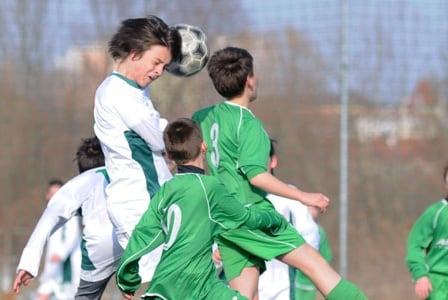
Scientists have been studying soccer players to determine the levels of head injuries and trauma from a common practice called \”heading.\” How much is too much?
While we’ve been focused lately on head injuries in other sports such as hockey, football, and boxing, scientists have been studying soccer players to determine the levels of head injury and trauma from a common practice called “heading.”
If you’ve watched—or played—soccer, you’ll know that heading (hitting the ball with the head) is a big part of the game. Researchers from the Albert Einstein College of Medicine at Yeshiva University in New York have recently presented a study indicating that repeatedly heading a soccer ball increases the risk for brain injury and cognitive impairment.
The researchers did a series of brain scans on soccer players who regularly head the ball. They found that those who most frequently headed the ball—more than 1,000 times per year—showed the most significant signs of brain injury.
The study involved 38 amateur soccer players whose average age was 31 and who all had played soccer since childhood. Of these, the players who headed the ball most frequently had the most signs of traumatic brain injury. In memory tests, these players had the worst outcomes in verbal memory tests and psychomotor speed, both of which are crucial for mind-body coordination.
Since soccer is the most popular sport among Canadian children (almost 20 percent), this finding is troubling. Because of ongoing research such as this study, a nonprofit group called ThinkFirst called for age limits for heading along with a training program to teach children how to head the ball to avoid long-term injury.
Playing soccer is a great way to get a workout—not only does it burn calories, strengthen the heart muscle, and strengthen bones, it’s also great fun. Just remember to use your head when it comes to heading.



